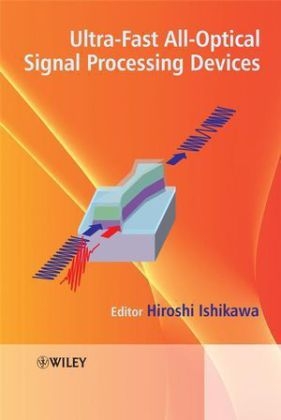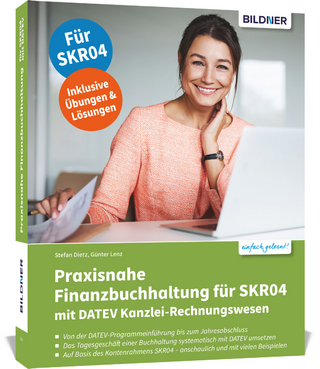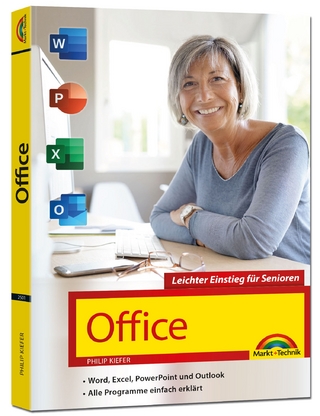
Ultrafast All-Optical Signal Processing Devices
John Wiley & Sons Inc (Verlag)
978-0-470-51820-5 (ISBN)
Semiconductor-based Ultra-Fast All-Optical Signal Processing Devices –a key technology for the next generation of ultrahigh bandwidth optical communication systems! The introduction of ultra-fast communication systems based on all-optical signal processing is considered to be one of the most promising ways to handle the rapidly increasing global communication traffic. Such systems will enable real time super-high definition moving pictures such as high reality TV-conference, remote diagnosis and surgery, cinema entertainment and many other applications with small power consumption. The key issue to realize such systems is to develop ultra-fast optical devices such as light sources, all-optical gates and wavelength converters.
Ultra-Fast All-Optical Signal Processing Devices discusses the state of the art development of semiconductor-based ultrafast all-optical devices, and their various signal processing applications for bit-rates 100Gb/s to 1Tb/s.
Ultra-Fast All-Optical Signal Processing Devices:
Provides a thorough and in-depth treatment of the most recent achievements in ultrafast all-optical devices
Discusses future networks with applications such as HD-TV and super-high definition moving screens as a motivating background for devices research
Covers mode-locked semiconductor lasers, electro-absorption modulator based 160Gb/s signal sources, SOA based symmetric Mach-Zehnder type all-optical gates, intersubband transition gate device, and more
Explains the technical issues behind turning the ultra-fast optical devices into practical working tools
Examples of above 160Gb/s transmission experiments
Discusses future prospects of the ultra-fast signal processing devices
This invaluable reference will provide device researchers and engineers in industry, researchers at universities (including graduate students, and post doctorial researchers and professors) and research institutes with a thorough understanding of ultrahigh bandwidth optical communication systems. Device and communication market watchers will also find this book useful.
Dr Hiroshi Ishikawa, Tsukuba, Japan Dr Ishikawa is the Director of the Ultrafast Photonic Devices Laboratory in National Institute of Advanced Industrial Science and Technology (AIST) in Japan. He worked for research and development of optical semiconductor devices in Fujitsu Labs Ltd from 1972 to 2001. In 2001 he moved to Femtosecond Technology Research Association Central Res. Lab. as a group leader of ultrafast all-optical switching devices. He is at AIST since 2004. He is a member of Japan Society of Applied Physics, The Physical Society of Japan, The Institute of Electronics, Information and Communication Engineers, and IEEE (Fellow).
Contributors ix
Preface xi
1 Introduction 1
Hiroshi Ishikawa
1.1 Evolution of Optical Communication Systems and Device Technologies 1
1.2 Increasing Communication Traffic and Power Consumption 2
1.3 Future Networks and Technologies 4
1.3.1 Future Networks 4
1.3.2 Schemes for Huge Capacity Transmission 5
1.4 Ultrafast All-Optical Signal Processing Devices 6
1.4.1 Challenges 6
1.4.2 Basics of the Nonlinear Optical Process 7
1.5 Overview of the Devices and Their Concepts 11
1.6 Summary 13
References 13
2 Light Sources 15
Yoh Ogawa and Hitoshi Murai
2.1 Requirement for Light Sources 15
2.1.1 Optical Short Pulse Source 16
2.1.2 Optical Time Division Multiplexer 19
2.2 Mode-locked Laser Diodes 20
2.2.1 Active Mode Locking 20
2.2.2 Passive Mode Locking 23
2.2.3 Hybrid Mode Locking 25
2.2.4 Optical Synchronous Mode Locking 27
2.2.5 Application for Clock Extraction 29
2.3 Electro-absorption Modulator Based Signal Source 30
2.3.1 Overview of Electro-absorption Modulator 30
2.3.2 Optical Short Pulse Generation Using EAM 33
2.3.3 Optical Time Division Multiplexer Based on EAMs 38
2.3.4 160-Gb/s Optical Signal Generation 41
2.3.5 Detection of a 160-Gb/s OTDM Signal 43
2.3.6 Transmission Issues 46
2.4 Summary 47
References 47
3 Semiconductor Optical Amplifier Based Ultrafast Signal Processing Devices 53
Hidemi Tsuchida and Shigeru Nakamura
3.1 Introduction 53
3.2 Fundamentals of SOA 53
3.3 SOA as an Ultrafast Nonlinear Medium 56
3.4 Use of Ultrafast Response Component by Filtering 57
3.4.1 Theoretical Background 57
3.4.2 Signal Processing Using the Fast Response Component of SOA 60
3.5 Symmetric Mach–Zehnder (SMZ) All-Optical Gate 64
3.5.1 Fundamentals of the SMZ All-Optical Gate 64
3.5.2 Technology of Integrating Optical Circuits for an SMZ All-Optical Gate 67
3.5.3 Optical Demultiplexing 68
3.5.4 Wavelength Conversion and Signal Regeneration 73
3.6 Summary 83
References 83
4 Uni-traveling-carrier Photodiode (UTC-PD) and PD-EAM Optical Gate Integrating a UTC-PD and a TravelingWave Electro-absorption Modulator 89
Hiroshi Ito and Satoshi Kodama
4.1 Introduction 89
4.2 Uni-traveling-carrier Photodiode (UTC-PD) 91
4.2.1 Operation 91
4.2.2 Fabrication and Characterization 96
4.2.3 Characteristics of the UTC-PD 98
4.2.4 Photo Receivers 114
4.3 Concept of a New Opto-electronic Integrated Device 117
4.3.1 Importance of High-output PDs 117
4.3.2 Monolithic Digital OEIC 118
4.3.3 Monolithic PD-EAM Optical Gate 118
4.4 PD-EAM Optical Gate Integrating UTC-PD and TW-EAM 119
4.4.1 Basic Structure 119
4.4.2 Design 120
4.4.3 Optical Gating Characteristics of PD-EAM 123
4.4.4 Fabrication 125
4.4.5 Gating Characteristics 127
4.4.6 Applications for Ultrafast All-Optical Signal Processing 131
4.4.7 Future Work 143
4.5 Summary and Prospects 147
References 148
5 Intersub-band Transition All-Optical Gate Switches 155
Nobuo Suzuki, Ryoichi Akimoto, Hiroshi Ishikawa and Hidemi Tsuchida
5.1 Operation Principle 155
5.1.1 Transition Wavelength 156
5.1.2 Matrix Element 157
5.1.3 Saturable Absorption 157
5.1.4 Absorption Recovery Time 158
5.1.5 Dephasing Time and Spectral Linewidth 160
5.1.6 Gate Operation in Waveguide Structure 162
5.2 GaN/AlN ISBT Gate 164
5.2.1 Absorption Spectra 165
5.2.2 Saturation of Absorption in Waveguides 168
5.2.3 Ultrafast Optical Gate 170
5.3 (CdS/ZnSe)/BeTe ISBT Gate 172
5.3.1 Growth of CdS/ ZnSe/ BeTe QWs and ISBT Absorption Spectra 173
5.3.2 Waveguide Structure for a CdS/ ZnSe/ BeTe Gate 177
5.3.3 Characteristics of a CdS/ ZnSe/ BeTe Gate 181
5.4 InGaAs/AlAs/AlAsSb ISBT Gate 183
5.4.1 Device Structure and its Fabrication 183
5.4.2 Saturation Characteristics and Time Response 184
5.5 Cross-phase Modulation in an InGaAs/AlAs/AlAsSb-based ISBT Gate 186
5.5.1 Cross-phase Modulation Effect and its Mechanisms 187
5.5.2 Application to Wavelength Conversion 192
5.6 Summary 195
References 196
6 Wavelength Conversion Devices 201
Haruhiko Kuwatsuka
6.1 Introduction 201
6.2 Wavelength Conversion Schemes 202
6.2.1 Optical Gate Switch Type 202
6.2.2 Coherent Type Conversion 204
6.3 Physics of Four-wave Mixing in LDs or SOAs 205
6.3.1 Model 205
6.3.2 Asymmetric χ(3) for Positive and Negative Detuning 210
6.3.3 Symmetric χ(3) in Quantum Dot SOAs 212
6.4 Wavelength Conversion of Short Pulses Using FWM in Semiconductor Devices 214
6.4.1 Model 214
6.4.2 The Effect of the Stop Band in DFB-LDs 217
6.4.3 The Effect of the Depletion of Gain 218
6.4.4 The Pulse Width Broadening in FWM Wavelength Conversion 219
6.5 Experimental Results ofWavelength Conversion Using FWM in SOAs or LDs 220
6.5.1 Wavelength Conversion of Short Pulses Using a DFB-LD 220
6.5.2 Wavelength Conversion of 160-Gb/s OTDM Signal Using a Quantum Dot SOAs 221
6.5.3 Format-free Wavelength Conversion 222
6.5.4 Chromatic Dispersion Compensation of Optical Fibers Using FWM in DFB-LDs 224
6.6 The Future View ofWavelength Conversion Using FWM 225
6.7 Summary 226
References 226
7 Summary and Future Prospects 231
Hiroshi Ishikawa
7.1 Introduction 231
7.2 Transmission Experiments 231
7.2.1 FESTA Experiments 231
7.2.2 Test Bed Field Experiment 235
7.2.3 Recent Transmission Experiments above 160-Gb/s 236
7.3 Requirements on Devices and Prospects 238
7.3.1 Devices Described in this Book 238
7.3.2 Necessity for New Functionality Devices and Technology 240
7.4 Summary 241
References 242
Index 243
| Verlagsort | New York |
|---|---|
| Sprache | englisch |
| Maße | 178 x 252 mm |
| Gewicht | 599 g |
| Einbandart | gebunden |
| Themenwelt | Mathematik / Informatik ► Informatik |
| Technik ► Elektrotechnik / Energietechnik | |
| Technik ► Nachrichtentechnik | |
| ISBN-10 | 0-470-51820-0 / 0470518200 |
| ISBN-13 | 978-0-470-51820-5 / 9780470518205 |
| Zustand | Neuware |
| Haben Sie eine Frage zum Produkt? |
aus dem Bereich


